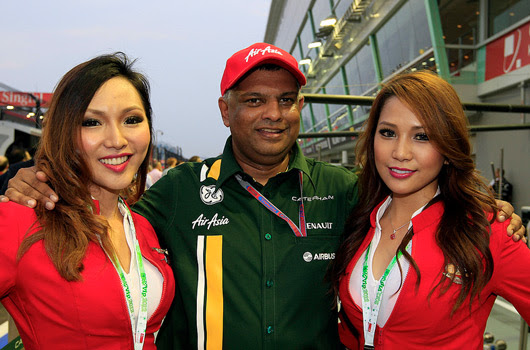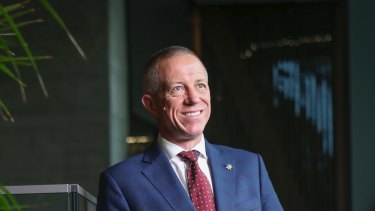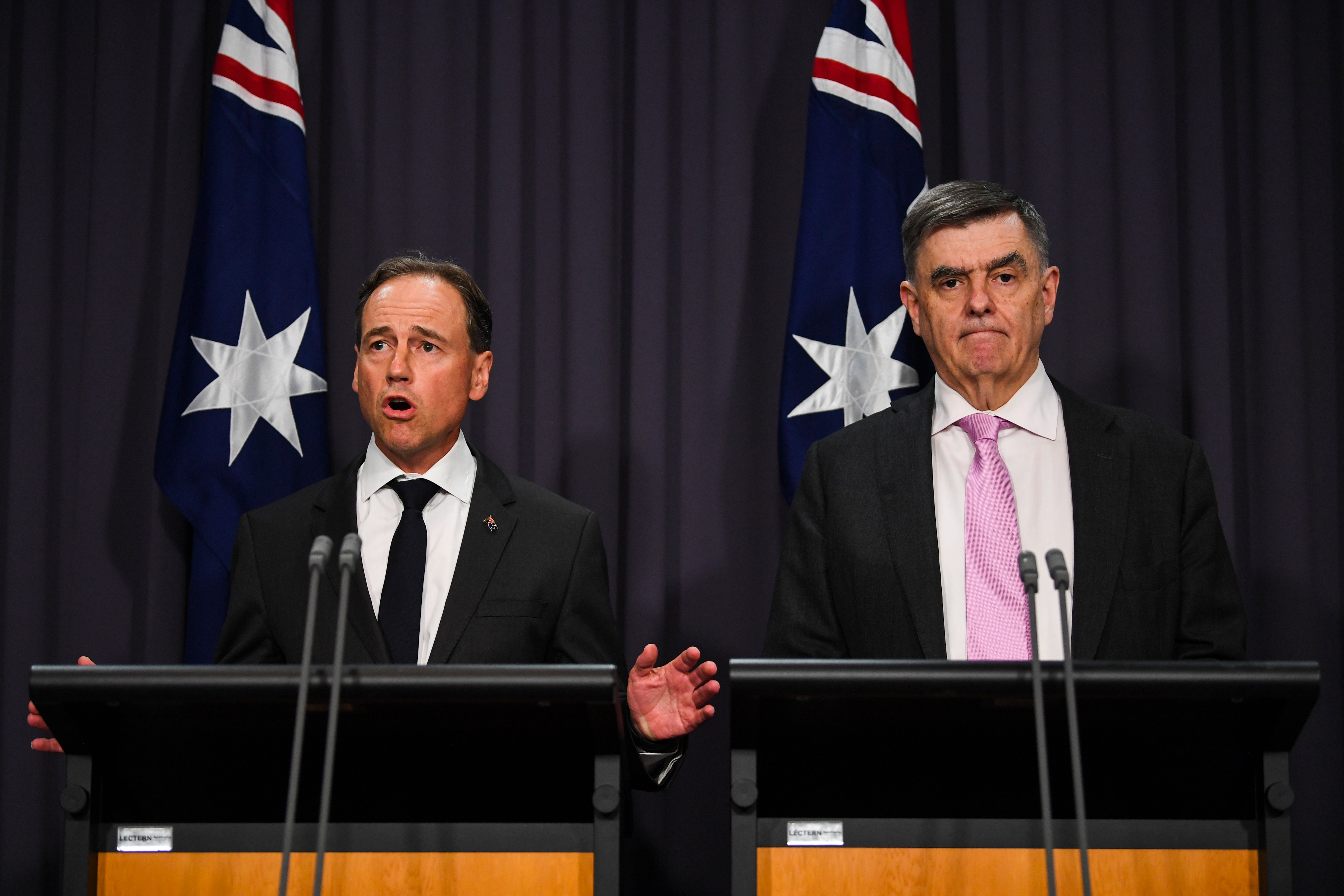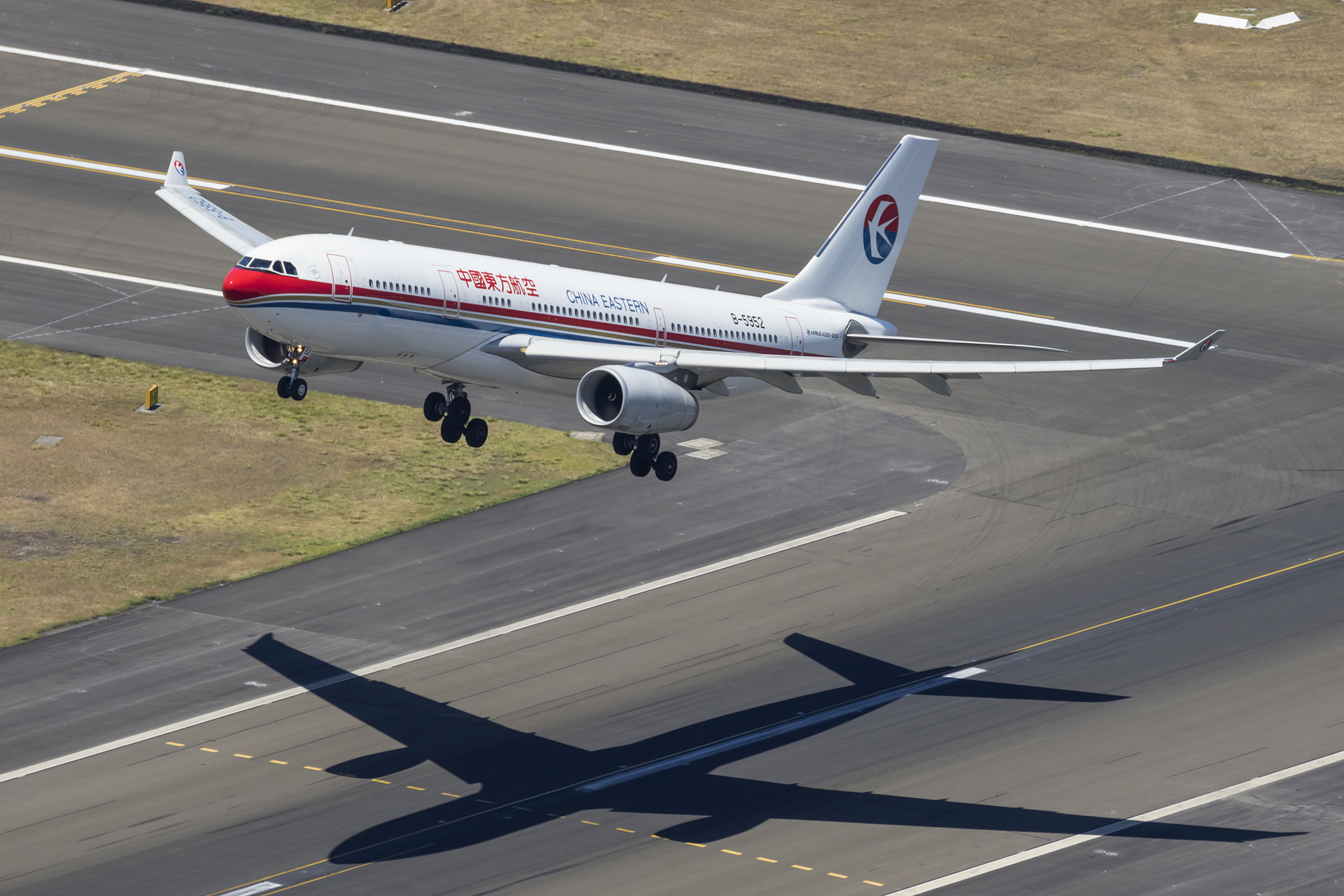ANZ's Secret 1MDB Sacking Spree... How Come Management Still Sit Pretty?
18 MAR 2016
There has been not a squeak from Australia’s banking regulators, prosecutors or politicians about Najib’s billions, handled by the ANZ predominantly owned AmBank in KL.
Whilst regulatory authorities across the globe have indicated that they are now closely studying this stunning scandal and banking heads have started to roll in the face of questioning by the Swiss, US and Singapore, Australia has said nothing.
Neither is it apparently doing anything about the shocking state of affairs.
Except, that Sarawak Report has now learnt that secretly, behind the scenes, several of AmBank’s more junior KL staff were summarily blamed and then sacked last year, just after the cat was let out of the bag by Sarawak Report about those multi-million dollar bank accounts in AmBank.
These included two minority race Senior Relationship Managers and several other more junior staff.

Mike Smith (ex-CEO) left and Chair David Gonsky
Is that supposed to be it?
Are these unfortunates, who have seen their careers destroyed, to carry all the blame?
Because, a major banking concern like ANZ and the regulators behind it, must surely know that global compliance requirements do not exonerate banks, who put the blame on junior staff for non-compliance of such magnitude, particularly with regard to the accounts of high-profile, politically exposed politicians such as a national Prime Minister?
Do ANZ do compliance?

Logos should inspire trust that action will be taken when things go wrong
The Australian banking concern ANZ is, of course, the major shareholder of AmBank, where Najib kept all his dodgy accounts, handling hundreds of millions of dollars and billions of ringgit.
It is, therefore, the most blatantly and obviously culpable of all the international banking institutions involved in this sorry saga.
Some of that money has been directly traced from the KWAP public pension fund cash, borrowed by the 1MDB subsidiary company SRC. That cash flowed, according to MACC investigators, out of SRC and fairly directly into Najib’s AmBank accounts – to be spent on credit card bills and also million ringgit payments to political hangers on and other ‘recipients’, whom Najib plainly needed to satisfy.
Let us be clear, Najib has now, finally, fully admitted to all of the above.
His excuse, as explained by his compliant new Attorney General last month, was that he hadn’t realised that all this money which appeared in his account had come from SRC.
Even so, he spent it anyway! A child would know that you don’t spend money that mistakenly arrives into your possession, but the Najib appointed AG, has scandalously “cleared” Najib on the basis of this preposterous excuse – and is now being challenged by the Malaysian Bar Association and others for doing so.
So why didn’t ANZ warn the PM he was spending SRC money?!
Observers in Malaysia and Australia have started to question what AmBank has been doing about all this shocking information? Because, of course, very senior people at ANZ Bank must have known for years about these accounts, which the rest of Malaysia only discovered existed in July.
As one compliance expert confirmed to Sarawak Report:
“The boss of the bank [Mike Smith] would have known if a PM had such a big account. The Risk Officer [Nigel Denby] should have done due diligence before. Banks have an obligation to create a specific profile for political people and if you have a customer with public responsibility you have to know where their money is coming from and you should have specific monitoring on these people.
It is not conceivable the Relationship Managers did not tell their boss. You have to take specific care on such accounts. The senior people at the bank – it is not possible they did not know. If they really didn’t know then they didn’t know their job.”
This self evident observation makes it clear that if Najib was spending public money that he was unaware was arriving into his accounts, then any half-functioning banking institution should long since have warned him of the fact… because the bosses of the bank ought to have been alerted to the huge sums, established their origin and questioned the account holder about what was going on!
What was so wrong at AmBank/ ANZ that this was not happening?
AmBank is majority owned by ANZ, which, as part of its agreement with the KL subsidiary, seconds all the major office holders to the bank. Sarawak Report and others have already pointed out that the AmBank Group Chief Executive and Chief Finance Officer were both from ANZ. The latter remains in her post, despite having presided over this entire period of suspicious, multi-million dollar activity in Najib’s accounts.

Former AmBank CEO left early April last year – the CFO, Mandy Smith remains in post
The AmBank Group CEO, however, returned to Australia in April of last year, before his term was out and shortly after the 1MDB/ PetroSaudi scandal was published by Sarawak Report. Several observers have questioned whether this was in response to the 1MDB imbroglio and Najib’s suspicious related spending – and indeed whether a fine exacted by Malaysia’s own Central Bank was likewise a connected matter?
However, ANZ has formally retaliated by issuing a statement denying that the decision of Ashok Ramamurthy to return to Australia had anything to do with this scandal, citing personal reasons instead. Meanwhile, no explanation has so far been provided by this public Australian bank for the fine exacted by Bank Negara.
By this stage, shareholders must be wondering why, if this executive did not resign because of Najib’s accounts, he did not do so?
And why are other senior figures, who must have known about these accounts, still sitting in their jobs, whilst the junior staff reporting to them have been sacked?
Risk Management
There are several senior figures, earning top dollar at ANZ Bank, who had to have known about the massive, game-changing accounts belonging to Najib Razak in their bank. These include ex-CEO Mike Smith, who resigned in September last year. According to his written accolades he had built business at the bank by focusing on none other than its South East Asian accounts, which purportedly did extremely well:

Spot on the money – but who owned these profitable accounts nurtured by Smith? Did he not know?
Mike Smith departed, just as the storm started swirling around the region’s most embarrassing financial scandal to do with his bank. However, his successor, the former Chief Financial Officer, Shayne Elliot, has certainly done nothing to open up about his bank’s involvement.
Not surprising, since he was there in the middle of it all. How could he, any less than Smith, not have known? And why is he not being bitten in the butt this very moment by Australia’s regulators, in order to explain the situation and do a proper due diligence on what has been going on?
There is another character, whom banking insiders have pointed to as a key figure, whose job was solely and entirely supposed to be to prevent exactly what happened with this politically connected account. This is the British national Nigel Denby, who acts as AmBank’s Chief Risk Officer, based in Hong Kong – also seconded from ANZ.

How come Nigel knew not – since he was there throughout Najib’s phenomenal banking activities?
It would appear that either Nigel spends all day doing something other than his job and had not checked the figures coming out of KL or where those profits originated from, or else he knew. Alternatively, are the suggestions correct that he knew, but didn’t tell his own boss Mike Smith?
In which case, what did Mike Smith himself do all day to not notice what his Chief Risk Officer was up to with these high rolling accounts?
Finally, but not least, what is the top cheese in charge of the Board of this bank, David Gonski, doing – apparently just sitting there with all this scandal swamping out from underneath him?
The ball is now in the court of Australia’s regulators and political establishment, which for months appear to have been looking the other way on all matters relating to their connections to Malaysia’s extraordinary political scandals.
Does Australia really plan to just sit there and do nothing (except keep Sirul quiet) in the swiftly retreating hope that this whole embarrassing story just goes away?



 When passed in 2010, the UK Bribery Act was dubbed the “most stringent anti-corruption legislation in the world.” This was due in part to Section 7, which created an unprecedented form of vicarious liability at the time, with a potentially strong extraterritorial reach. Since then compliance professionals have wondered what implications this could have. And then came Airbus.
When passed in 2010, the UK Bribery Act was dubbed the “most stringent anti-corruption legislation in the world.” This was due in part to Section 7, which created an unprecedented form of vicarious liability at the time, with a potentially strong extraterritorial reach. Since then compliance professionals have wondered what implications this could have. And then came Airbus.








